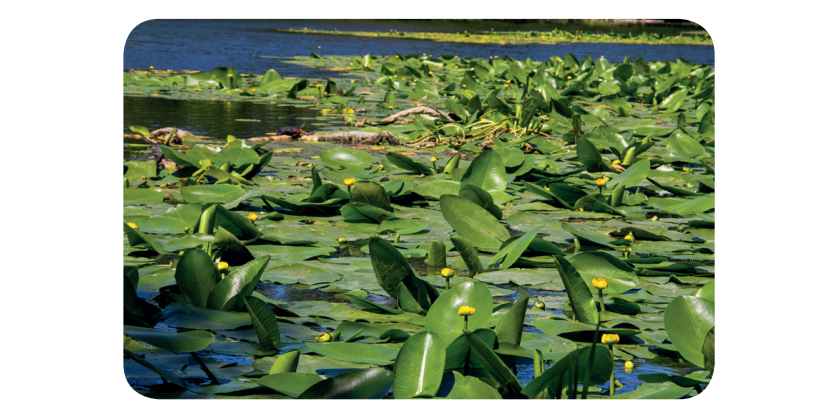



In the vicinity of water or in the water, there are a number of plants that are not well-researched in terms of content substances, probably because of their difficult collection. The exception is the yellow water-lily (Nuphar luteum) of the family of Nymphaeaceae containing terpenic alkaloid nufarin, whose rhizomes have been collected since the 17th century by herbalists for its anticancer activity.

Pic 117: Yellow water-lily (Nuphar luteum)
Another plant growing along the water is sweet flag (Acorus calamus) of the family Acoraceae, containing essential oils, bitter substances and tannins. Aromatic rhizomes are used for relaxing cramps or to improve digestion.